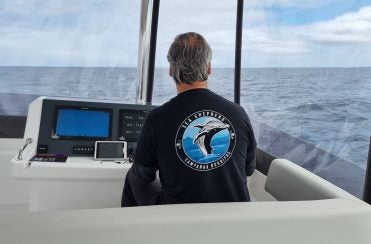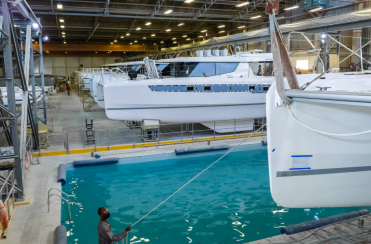Hurricane season is upon us and if you own a boat, you will need to devise a comprehensive storm plan. The sooner you do this, the better. Generally, your marine insurance company will require that you submit a Named Storm Plan. What this plan does is tell the insurance company what you plan to do with your yacht, should there be a named storm approaching. And while the threat of a tropical storm is never a good thing, having a plan is what makes the situation manageable.
When my clients are asked by their insurance company to submit a Named Storm Plan, I am happy to help. I provide a list of what needs to be done to ensure the yacht is prepared in the event of a named storm, and then review it with the yacht owner so that they understand everything that I have listed. In this blog post I am going to provide you with that list, as well as shed some light on marine insurance policies.
Hurricane Season and Insurance Companies
Hurricane season runs from June to November, with the most active part of the season occurring from August to September.
If you own a catamaran, most yacht insurance companies will require that the vessel be north of 30.5 degrees longitude or south of 10 degrees north latitude from July 1st to November 1st. As a yacht owner, should you decide to keep your yacht in the Hurricane box during this time frame, the insurance premium will be higher. The standard deductible may not go up, but if the yacht is located in the box during hurricane season, the named storm deductible could be 15-20% in the event of damage caused by a named storm. Additionally, you will need to submit a Named Storm Plan. See the example below.
Storm Plan for Insurance Company
The vessel will be secured in the following manner:
- All bow, stern and spring lines will be fitted with chafe gear, doubled as needed
- Roller Furling Genoa will be removed and stored below
- Main sail and main sail cover will be storm tied
- Any cockpit or helm canvas removed or rolled up and secured
- Secure tender, remove outboard engine if possible
- All fenders will be deployed, fender boards added if needed.
- Batteries will be fully charged
- All electric and manual bilge pumps will be tested and operational
- All hatches will be secured and locked
- All exterior gear removed
- All running rigging removed or secured
- All helm electronics tested operational and covered
- All sea cocks checked for ease of closing if needed
- Wooden plugs available for each thru hull fitting.
- Fuel tanks checked for sufficient fuel as needed
- Engines checked, run, and tested
- If generator is fitted, checked, run, and tested
- Monitor local and national weather services including VHF, TV, and internet. Keep in touch with other boat owners in the area.
Extra precautionary measures to be taken if yacht is at a private residence:
- Double lines secured to two different strong points on yacht and ashore to pilings and/or trees where possible.
- Check area for loose items such as patio furniture which could damage yacht.
- Lines may be tied across the canal to keep the yacht at least 10’ away from the dock and able to rise and fall with the tide and any surge.
- Yacht’s anchor may be deployed if deemed it would be of additional security.
Can some else be responsible for your yacht?
Yes, you may put someone else in charge of preparations. Perhaps you have left your boat in Florida, the Bahamas or Puerto Rico during the hurricane season, but you are not there to prepare for the storm yourself. Your insurance company will require the contact information for the company or person(s) that will be responsible if you are not present to prepare your yacht. You must also keep the insurance company informed of any changes in location, or inform them if you have plans to place your yacht in dry storage rather than at a dock. If on land, they will require specific storage details, such as supports and tie-downs.
Proper preparations are the best ways to ensure your yacht is safe in the event of a storm. If you have any questions about how to keep your catamaran secure during hurricane season, please contact me today.


